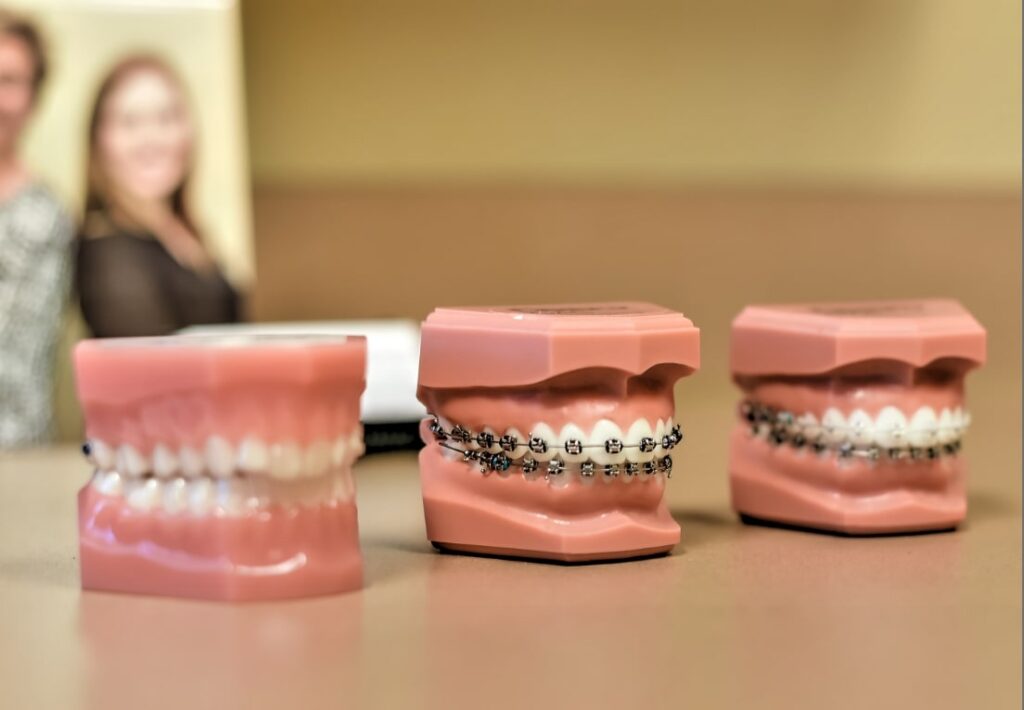Comprehensive Overview to Orthodontics Treatments for Fixing Dental Misalignments
Comprehending the ins and outs of each procedure, including their mechanisms, benefits, and potential drawbacks, is crucial in making informed choices regarding one's orthodontic treatment. As we navigate via the thorough guide to orthodontic procedures for dealing with oral misalignments, the intricate information of each approach will unfold, losing light on the course toward a harmonious and useful oral alignment.
Orthodontic Procedures Review

In addition to clear aligners and conventional dental braces, orthodontists might likewise advise other treatments like headgear, palatal expanders, or retainers to attend to specific positioning concerns (cumming invisalign). These procedures are customized to every patient's special needs and might involve a mix of therapies to attain the desired outcomes. Regular changes and tracking are vital components of orthodontic treatment to make sure progression is on track and to make any type of essential modifications along the way. By going through orthodontic treatments, patients can not just achieve a straighter grin however likewise boost their total dental wellness and feature.
Typical Dental Braces: Just How They Function
When thinking about orthodontic therapies for dental misalignments, standard braces attract attention as a reliable method for fixing teeth positioning. Traditional braces include braces, wires, and bands that interact to apply continual pressure on the teeth, progressively moving them right into the desired positioning. The braces are attached to the teeth making use of a special adhesive, and the cables are threaded via the brackets. By changing the stress of the wires, orthodontists can regulate the direction and pressure related to each tooth, assisting them right into proper placement over time.
As pressure is used to the teeth through the braces, the bone surrounding the teeth is reshaped to support the new tooth positions. Clients will require normal adjustments at the orthodontist's office to guarantee the braces continue to apply the correct pressure for effective teeth movement.
Unnoticeable Aligners: Pros and Disadvantages
These clear, custom-made trays are basically undetectable when used, making them an attractive option for people looking for a much more aesthetically pleasing orthodontic therapy. Clients can remove the aligners prior to consuming or cleaning their teeth, minimizing the danger of food getting stuck in the home appliance and simplifying the cleansing procedure.

Surgical Orthodontic Options
Surgical interventions in orthodontics present practical options for addressing complex oral imbalances that might not be successfully solved via standard orthodontic treatments. While standard braces and unnoticeable aligners can deal with lots of orthodontic problems, specific cases need surgical treatment to achieve ideal results. Surgical orthodontic alternatives are commonly suggested for serious malocclusions, significant jaw discrepancies, and instances where the underlying bone structure needs alteration to accomplish proper placement.
One usual surgical orthodontic procedure is orthognathic surgical procedure, which includes repositioning the jaws to deal with practical published here issues such as trouble eating or speaking. This surgery is usually done in collaboration with an orthodontist that assists align the teeth prior to and after the procedure. Surgical orthodontics may also entail procedures to reveal impacted teeth, get rid of excess gum cells, or reshape like this the jawbone to produce a more unified facial profile.
Prior to thinking about medical orthodontic options, individuals undergo a detailed evaluation to figure out the need and potential advantages of such treatments. cumming orthodontist. While surgery may seem challenging, it can significantly improve both the feature and visual appeals of the smile in situations where standard orthodontic treatments fail
Retainers and Post-Treatment Care

Post-treatment care involves complying with the orthodontist's directions faithfully. This might consist of correct oral hygiene practices, attending follow-up appointments, and wearing the retainers as prescribed. Failure to comply with post-treatment care directions can lead to relapse, where the teeth gradually return towards their original positions. Consistent retainer wear, good dental health, and normal oral exams are essential for maintaining the outcomes attained with orthodontic surgical procedure and making certain the lasting security of the remedied dental positioning.
Final Thought
Finally, orthodontic treatments supply numerous choices for correcting oral imbalances. Conventional braces use steel braces and wires to change teeth into correct placement. Unseen aligners give a more very discreet visit their website alternative however may not appropriate for all situations. Surgical orthodontic alternatives are offered for more serious misalignments. Retainers are generally utilized post-treatment to keep the new placement. Generally, orthodontic procedures can successfully improve dental wellness and aesthetic look.
As we navigate with the thorough guide to orthodontic procedures for remedying oral misalignments, the complex information of each technique will certainly unfold, dropping light on the path towards a useful and unified dental positioning. - cumming braces
One of the most usual orthodontic treatments is the use of braces, which consist of metal brackets and cables that apply gentle pressure to slowly change teeth right into the desired position.When thinking about orthodontic treatments for dental misalignments, standard dental braces stand out as a tried and true technique for dealing with teeth placing. In addition, unnoticeable aligners may not be suitable for complex orthodontic issues that require more significant teeth movement, as they are generally recommended for mild to moderate cases. Retainers are custom-made orthodontic devices developed to hold teeth in their fixed positions after the completion of orthodontic treatment.